Largest chinook return in lower 48 states on the Upper Columbia River at Hanford Reach waxes expectation, plus word on possible autumn/winter crab and razor clam opportunities Leave a reply
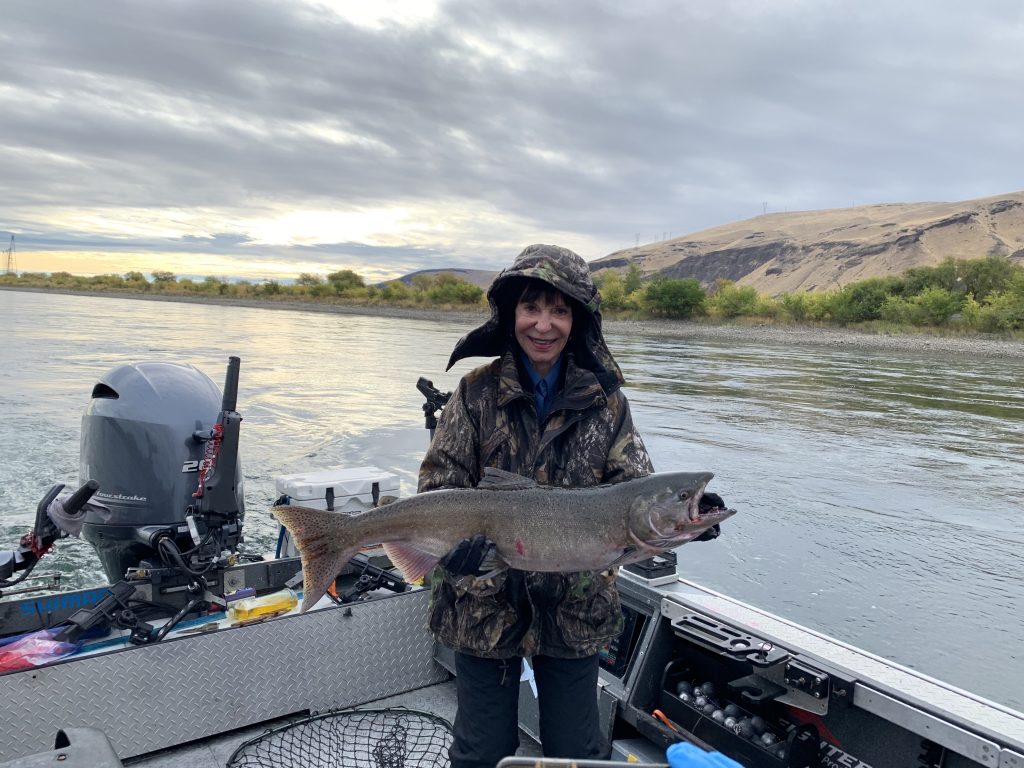
By Mark Yuasa
The Columbia River revealed plenty of nice surprises this summer and there’s another place that’ll capture the hearts of those looking at a “final chance” for big fall chinook.
One of my favorite times of year is now through mid-October to trek east of the Cascades to the Columbia in the Hanford Reach area to chase what is deemed as the largest chinook run in the lower 48 states.
“Fall chinook in the Hanford Reach are a very different breed compared to summer kings, and are much more bigger and powerful,” said guide Austin Moser, owner of Austin’s Northwest Adventures (https://www.austinsnorthwestadventures.com/), who started fishing this stretch of the river 12 years ago. “This year’s return is much better than the past couple of years, and the interest among my clients for this east side fishery has been steadily building.”
Every year brings a different scenario for fall chinook – better known as “upriver brights or URBs” – in this longest free flowing 50-mile stretch of water between dams along with unmatched scenery and historically remains one of the most consistent runs in the Pacific Northwest.
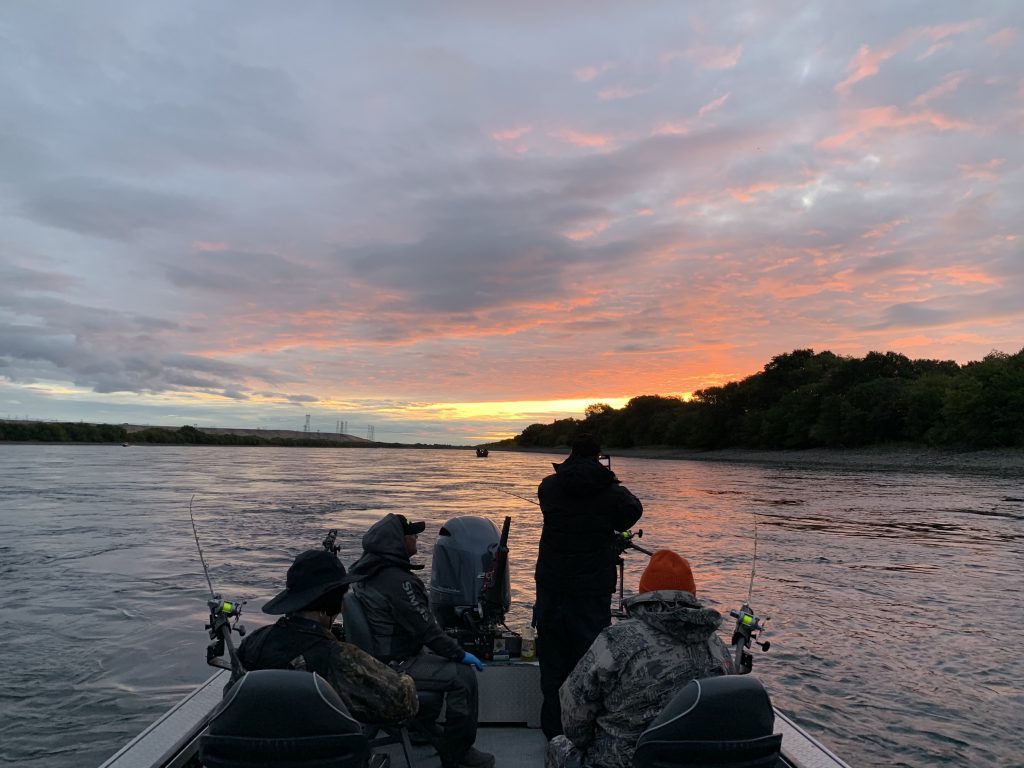
Before a downturn in fall chinook runs – due to the “Blob” a huge warm ocean current that wreaked havoc and depleted rich nutrients for many fish species mainly from 2014 to 2016 – the Upper Columbia saw returns that topped 600,000. In the Hanford Reach alone the run-size between 2013 and 2015 ranged 250,000 to 375,000, and the vast majority of them consisted of wild spawning fish. Despite harsh ocean conditions and warm river water temperatures the run seemed to hold its own.
In 2019, the season total climbed to 246,000, and this season’s pre-season forecast of 237,400 has already been waxed at Bonneville Dam.
As of Sunday (Sept. 13), 258,248 adult fall chinook had streamed over Bonneville compared to 156,710 on the same date in 2019 and a 10-year average of 324,164. This likely means the Hanford Reach area is in for a larger than predicted run, but according to Washington Department of Fish and Wildlife (WDFW) biologists we’re still a few days out to solidify that call.
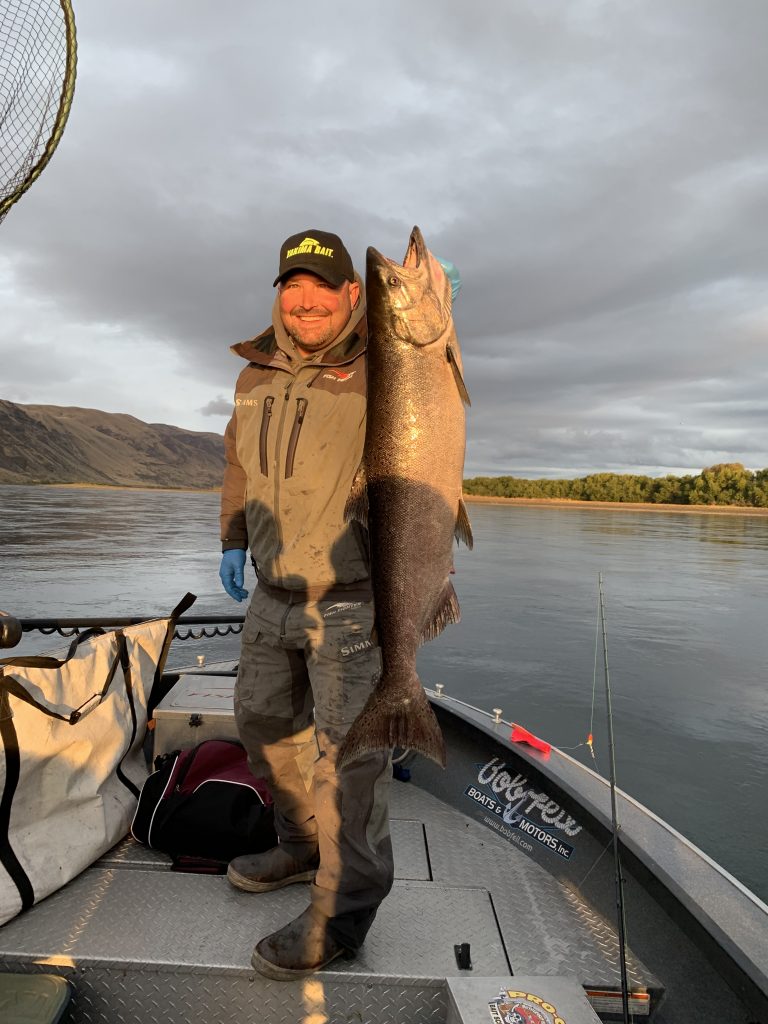
“It is early yet to make a call on how this year’s run is shaping up to be, but it is definitely not a weak run nor robust and more in the normal return range,” said Paul Hoffarth, a WDFW biologist. “In 2019, 87,651 returned (to Hanford Reach area) and included more than 50,000 natural-origin fish. This year we’re predicting around 92,700 and I’ll have an updated (in-season) run-size by (Sept. 16).”
“If everything shakes out, we should see about 50,000 to 69,000 natural spawners and our spawning goal is 31,000,” Hoffarth said. “Anytime we can exceed the goal is always good news.”
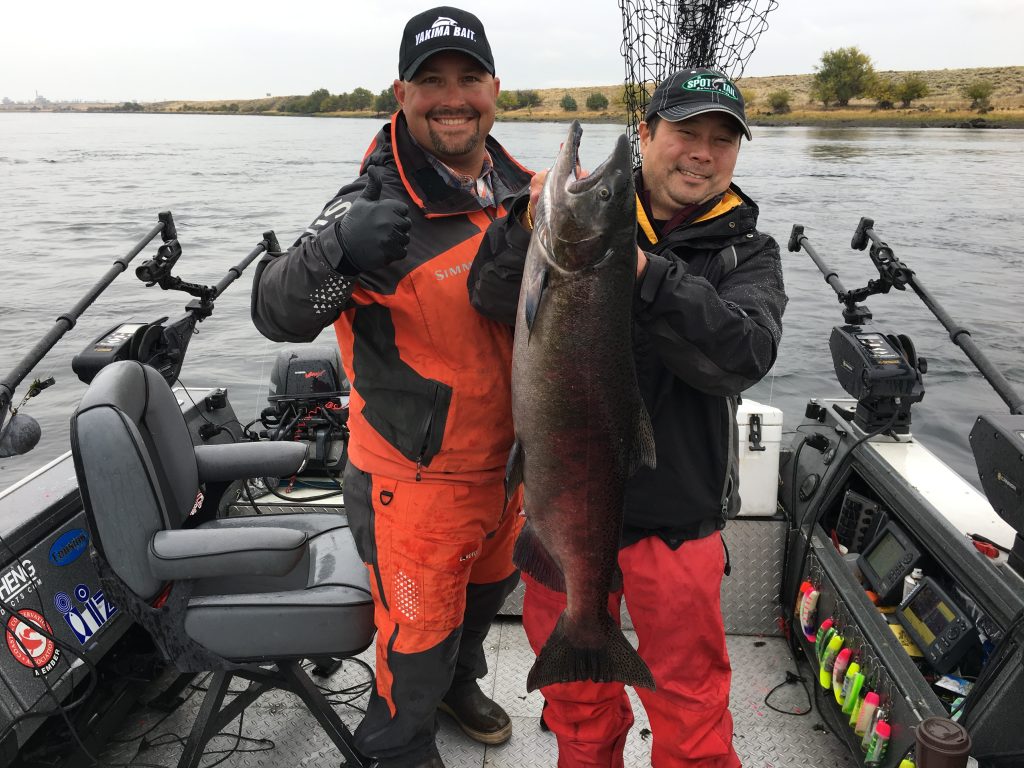
A protection program for the Hanford Reach fall chinook started in 2004, and provided much needed benefits. Closely monitoring water flows, redd counts and spawning escapements have all led to an increase of fish.
According to Hoffarth, the Priest Rapids and Ringold Springs hatcheries alone release about 10 million fall chinook on top of naturally spawning fall chinook. These fish provide opportunities from southeast Alaska to British Columbia and along the Washington coast while still leaving more for fisheries in the Columbia from Buoy 10 to the Gorge and finally in the Hanford Reach.
The recreational fishery from Bonneville Dam up to McNary Dam closed for chinook and coho retention on Sept. 8, and then briefly reopened Sept. 11-13 from Buoy 10 up to Highway 396 Bridge at Pasco. Through Sept. 6, an estimated 1,122 adult chinook have been kept (46 released) from approximately 6,300 angler trips.
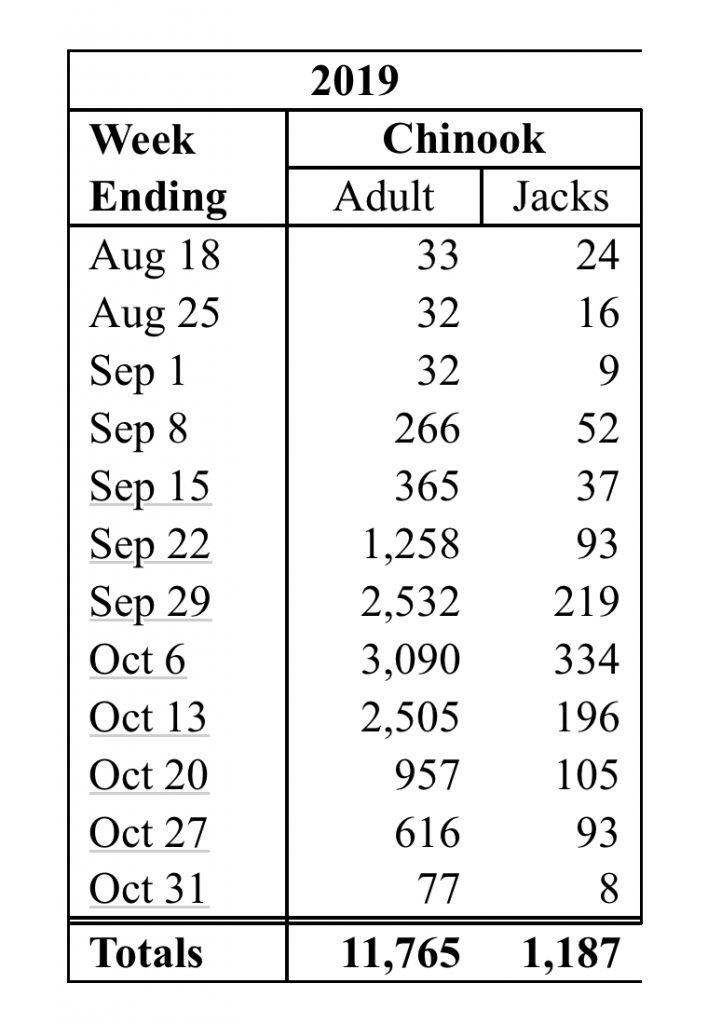
Fishing had been pretty good above Bonneville Dam at Drano Lake, and off the mouth of the Klickitat and Deschutes rivers in the Gorge area.
Fishing above the Highway 395 Bridge to Priest Rapids Dam remains open through Oct. 15 and with a good number of salmon heading this way, fishing should be decent around White Bluffs, and above the Vernita Bridge in the days and weeks ahead.
“There’s been some really nice chrome-bright fall chinook caught in the 25- to 30-pound range, and that always gets people excited,” Hoffarth said. “In recent days a couple boats did well with limits at Vernita and we’re about two weeks out from when fishing really gets going. I’d say the end of September and early October is the best time frame when we start to see a good harvest and when the fish quality is at its best.”
According to a weekly report (Monday, Sept. 14) put out by Hoffarth, fishing and catching picked up this past week for boat and bank anglers. Harvest for the week was the highest on record since the record return in 2015. Creel samplers in the Hanford Reach said boats averaged slightly less than a salmon per boat with anglers spending 16 hours per fish caught. From Sept. 7-13, WDFW staff interviewed anglers from 426 boats (973 anglers) and 55 bank anglers (Ringold Springs area) with 339 adult chinook and 39 jacks. Based on the sampling, an estimated 1,207 adult chinook and 218 chinook jacks were harvested from 3,632 angler trips.
For the entire season, 8,014 angler trips generated a catch of 1,743 adult chinook and 218 chinook jacks. Also, 188 sockeye and 35 wild steelhead were caught and released.
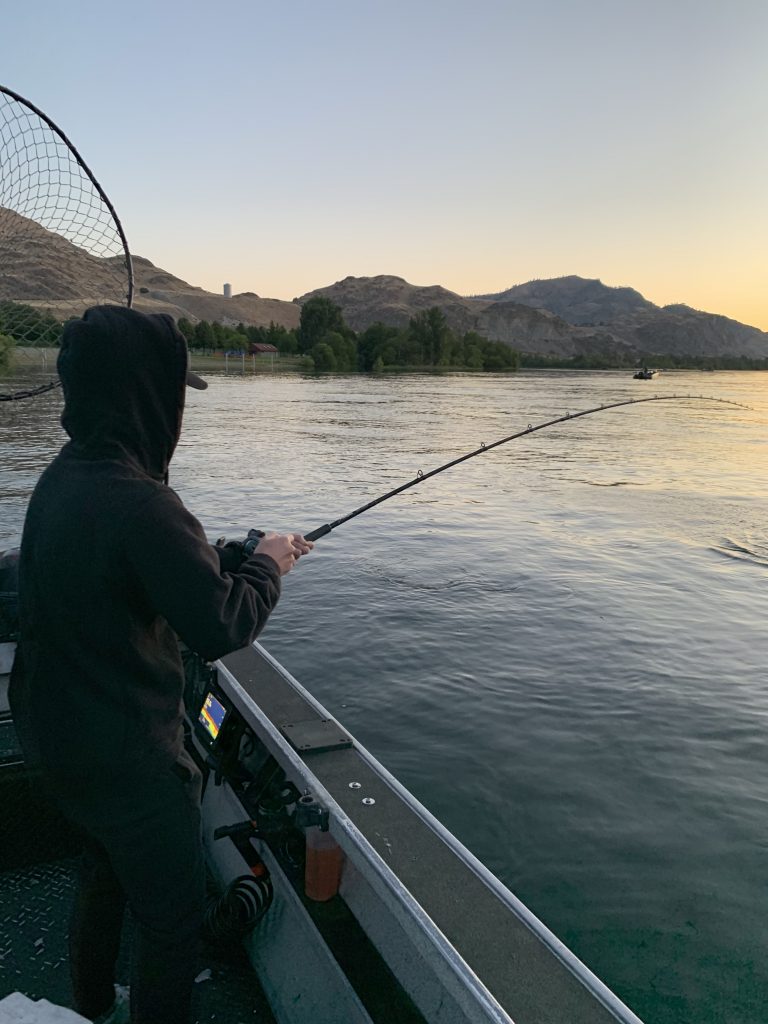
When to go
To track the optimum time to hit the Hanford Reach, anglers will closely monitor the fish counts at McNary Dam, located one mile east of Umatilla, Oregon. Through Sept. 13, 73,523 fall chinook had passed over the dam compared to 25,175 in 2019.
“When I want to know when to go fishing in the Hanford Reach area, I’ll look at the McNary fish counts,” said Moser, who started fishing the area on Sept. 13. “If you go in September you won’t catch a lot of fish, but they’ll be bigger and nice quality fish. When you get to October there is a bigger concentration of big bucks (male fall chinook) and they tend to be grumpy and more aggressive. The more later in the season you go the darker the fish will be as they start to get near spawning time but you’ll still find some quality fish in the mix too.”
“My phone has been ringing off the hook and I feel due to COVID people are just excited to get out of the house and the Vernita/Hanford Reach fishery is getting very popular,” Moser said. “It is an awesome fishery to end the year on and one of my favorite times of the season to go fishing.”
How and where to catch them
There is a variety of gear to catch fall chinook and be sure to carry a wide range of arsenal in the tackle box. Also know that most of the fishing ground can be found above and below the rough gravel boat launch near the Highway 24/Vernita Bridge, which turns into a small town filled with motor-homes, campers, tents and boat trailers.
“It is such a dynamic fishery where water speed and currents will dictate what style of gear and how I will fish certain areas,” Moser said of the roughly 20 fishing holes located on this 20-mile stretch of the river. “Some of the things I notice is it doesn’t matter what hole you’re on but when the current changes that will trigger a bite everywhere. If I was new to the fishery, I would get a topographic map and look where the deep holes are located that fish tend to hunker down in. Most of the deeper slots are 50 to 60 feet.”
“Whatever you put on the end of the hook I will use a Pro Troll Flasher because I like the fin and it adds a kick to your lure,” Moser said. “Divers and lead balls are the easiest way to fish but there will be times that I find a downrigger to be more effective so I’ll make sure to pack them along.”
Many will back-troll in the deep water slots a size 1 or 2 Spin-N-Glo and a gob of cured salmon egg cluster the size of a golf ball; a colorful Brad’s Super Bait stuffed with a tuna concoction; or a Yakima Bait Mag Lip or SpinFish; or a K-14, K-15 and K-16 Kwikfish wrapped with a sardine strip and smeared in scent jelly.
When using a Spin-n-Glo/egg cluster presentation be sure to attach a size 50 Jumbo Jet diver to get it near the bottom. Moser will also shorten his leader length anywhere from 28 to 32 inches long. A sharp 3/0 or 4/0 Gamakatsu Octopus or Big River hooks are a must to make sure the fish sticks. Many like the trailing hook to be a red Gamakatsu size 2 treble hook trailing off the egg cluster. There are times when anglers will also flat line a Kwikfish or Magnum Wiggle Wart behind the boat.
“In faster water I’ll run a jet diver with eggs or downstream troll with Pro Troll on a (10-ounce) lead ball, and when the water slows down, we’ll fish the deeper pools on Super Baits or Mag Lips with downriggers,” Moser said.

There are other anglers who will go “old school” with a frozen herring and chrome dodger set-up or bounce a Number 5 Vibrax spinner along the bottom.
Lastly, water temperatures will dictate whether the salmon are “bitey” or “lockjaw” although this year you can expect it to be somewhat cooler than normal.
Action of late has been happening near Columbia Point a deep-water holding area in Richland near the 182 Bridge. As the season progresses anglers will move upstream toward Milepost 31 and the old Hanford townsite and White Bluffs. During the peak of the fishery look for the most fish holding in the Vernita area where almost 50 percent of the upriver bright fall chinook spawn.
The Hanford Reach fall salmon fishery opened August 16 (Highway 395 Bridge upstream to Priest Rapids Dam). The daily limit is six salmon but only two may be adult fish. Anglers must stop fishing when the adult limit is retained. Anglers can keep fall chinook and coho both hatchery and wild. Anglers can use barbed or barbless hooks when fishing or salmon in this area of the Columbia River.
Anglers may fish with two poles for any species except sturgeon with two-pole endorsement. Party fishing is not allowed when fishing for salmon in this section of the Columbia River. The Columbia River upstream of the Highway 395 Bridge is closed for steelhead.
Word on winter Dungeness crab fisheries
If you’re like me thinking about autumn or winter downright sucks the cold wind out of my lungs, but there is something on the near horizon that will warm my soul.
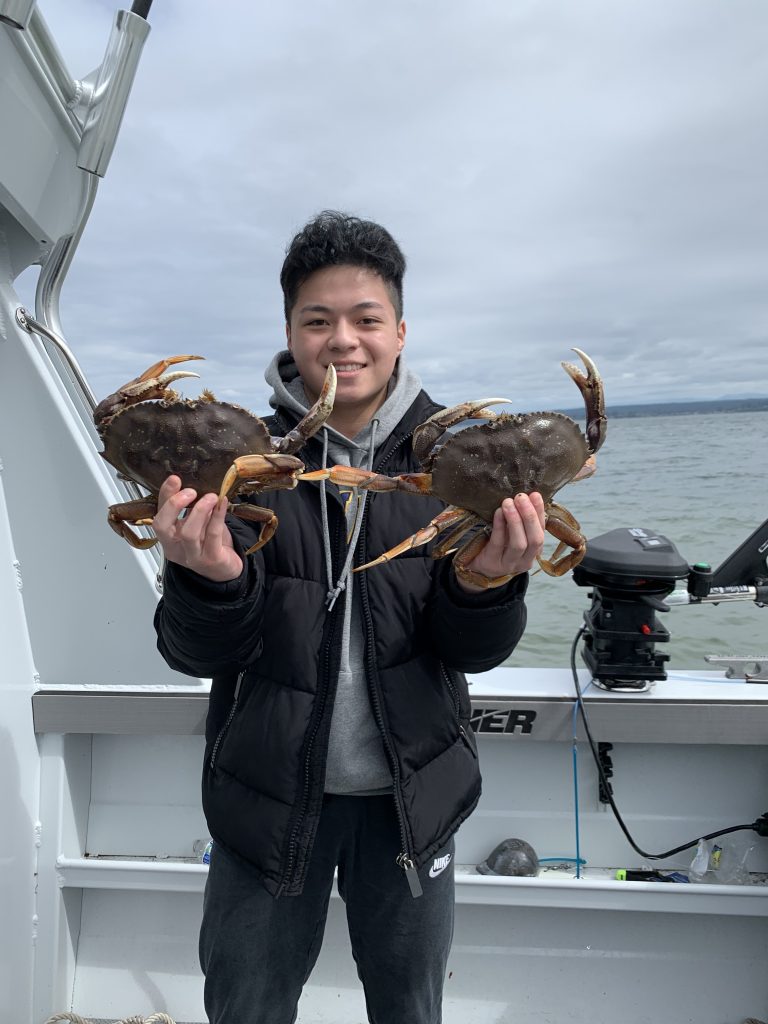
Let’s start off with the upcoming winter Dungeness crab season as we should hear very soon from the Washington Department of Fish and Wildlife (WDFW) where and when fishing will take place.
“We know we’ll have winter Dungeness crab fisheries in Puget Sound, but the big question is where they’ll occur,” said Don Velasquez, a WDFW Puget Sound shellfish manager. “If we have enough data (from angler summer catch record cards) to support a winter fishery then just like in past years we’ll likely open it between Oct. 1 and 7.”
One place guaranteed to have a winter crab season is the San Juan Islands as the summer fishery never achieves the state’s share of the recreational total allowable catch.
In recent years the winter fisheries happened in the northern waters from the Apple Cove Point-Edwards Point line north into the Strait of Juan de Fuca and is usually open daily through Dec. 31. Crab populations in southern reaches of Puget Sound were either in poor health or attained their share of the catch in the summer.
In 2019, the summer and winter Puget Sound sport Dungeness crab fishery landed 1,660,752 pounds (compared to 1,585,956 in 2018 and 1,764,633 in 2017).
Summer generates the highest participation level with an average of 192,798 catch cards issued compared to 23,578 during the winter fishery.
“In general, there was definitely a lot of interest this past summer,” Velasquez said. “The fishing pressure looked significant and was possibly related to folks wanting to get out on the water (due to the pandemic).”
For updates on crabbing and to submit your summer catch record card, go to https://wdfw.wa.gov/fishing/shellfishing-regulations/crab.
Despite a lower turnout during the winter, they’re highly sought after for their firm meat that provides fresh Dungeness crab for holiday feasts. Winter catch rates are often better quality and it keeps folks busy when other saltwater fishing options are minimal.
Other options
An official announcement is likely in the coming days on a fall and early winter coastal razor clam season for Long Beach, Twin Harbors, Mocrocks and Copalis beaches. A lot depends on a final review by health experts and the governor’s office, but it appears WDFW has the support from Pacific and Grays Harbor county leaders to move forward on a possible 40-day season through Dec. 31.
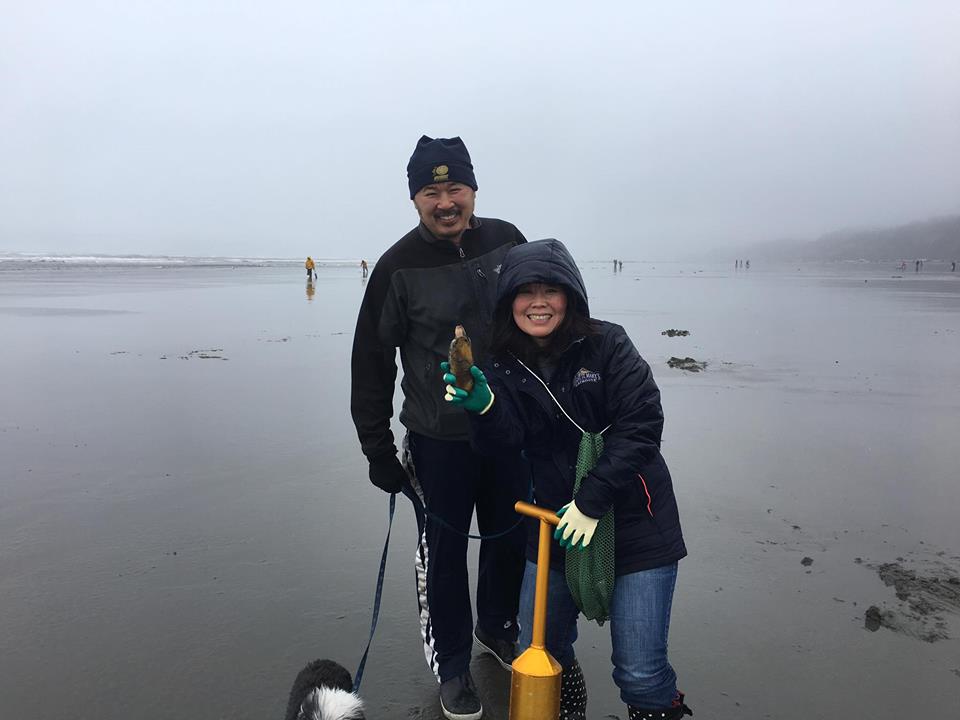
A WDFW spokesman indicated they want to do this the right way in the face of a pandemic. The good news is marine toxin results sent to the Department of Health Lab yesterday showed all beaches are in good shape with no red flags.
The Puget Sound coho salmon fishing season is nearing its peak timeframe and have arrived earlier than normal this season, generating decent action.
The “bite” has been happening in all the usual spots like West Point south of Shilshole Bay, in front of the Shilshole Marina breakwater, Elliott Bay, Meadow Point north to Richmond Beach, Jefferson Head, Point Monroe, Possession Bar, Point No Point, west side of Whidbey Island and across at Midchannel Bank off Port Townsend, San Juan Islands and Strait of Juan de Fuca between Sekiu and Port Angeles.
Central Puget Sound is open for silvers through Nov. 15; northern Puget Sound is open for hatchery coho only through Sept. 30; the Strait off Sekiu and Port Angeles and San Juan Islands are open until Sept. 30; south-central Puget Sound from Vashon Island south to Narrows Bridge is open until Oct. 31; Hood Canal is open until Nov. 30; and the Dungeness Bay terminal fishery is open through Oct. 1-31. Southern Puget Sound remains open year-round for hatchery coho and/or hatchery chinook only.
The PSA Sno-King Chapter Edmonds Coho Derby on Saturday had 720 adult and 67 youth participate with 148 hatchery coho weighed in. Results: 1, Ryan Dotson of Seattle, 9.10 pounds; 2, Jon Millenaar of Mt. Vernon, 9.02; 3, Steffen Harald Togersen of Shoreline, 8.64. The Everett Coho Derby is this weekend. Details: http://everettcohoderby.com/.
Down on the coast, the eastern portion of Grays Harbor east of Buoy 13 will open Sept. 23-Nov. 30, and generates some of the largest-sized silvers in our state with good fishing right up to the Thanksgiving timeframe.
The Westport Boat Basin coho fishery has also started to pick up. There are net pens produced annually in the net pens that started in 1975, are operated by the Port of Grays Harbor and students from nearby Ocosta High School. The 200,000 fry are supplied by the WDFW hatchery at Bingham Creek each year, are raised in net pens then released as fingerlings and return 2 or 3 years later.
The north end of the basin is where most coho will congregate. Anchovy bait under a float works but will also attract some birds so many will use a very small jig like a Pt. Wilson Dart or Buzz Bomb. A Blue Fox 7/8 oz. spinner works too. Also be sure to throw a crab pot out while you’re fishing. Daily limit is six fish, four adults and release chinook.

